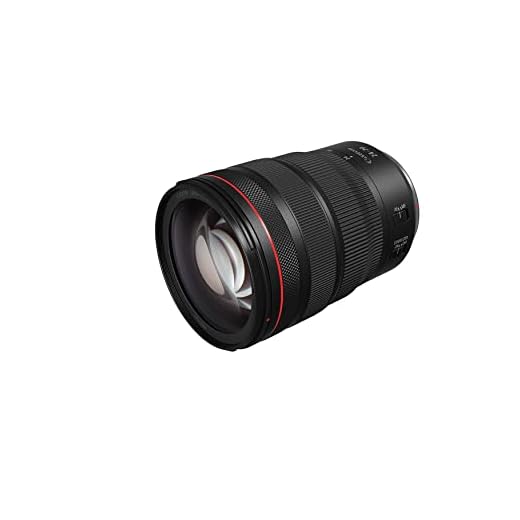


Mirrorless cameras have gained popularity in recent years for their compact size, lightweight design, and advanced features. One of the key advantages of mirrorless cameras is the ability to change lenses, allowing photographers to customize their gear for different shooting scenarios.
Unlike traditional DSLR cameras that use a mirror and optical viewfinder system, mirrorless cameras have a digital display that shows the image directly from the camera sensor. This design allows for a shorter flange distance, making it easier to create smaller, lighter camera bodies without sacrificing image quality.
Changing lenses on a mirrorless camera is a straightforward process that involves removing the existing lens and attaching a new one. This versatility gives photographers the freedom to experiment with different focal lengths, apertures, and optical characteristics to achieve their desired creative vision.
Can you change lenses on mirrorless camera?
Yes, one of the key advantages of mirrorless cameras is the ability to change lenses. This allows photographers to use different lenses for various shooting situations, such as wide-angle for landscapes, telephoto for wildlife, or macro for close-up shots.
How to change lenses:
To change lenses on a mirrorless camera, follow these simple steps:
| 1. | Turn off the camera to prevent any damage. |
| 2. | Press the lens release button located on the camera body. |
| 3. | Rotate the lens counterclockwise to detach it from the camera body. |
| 4. | Align the new lens with the camera mount and rotate it clockwise until it clicks into place. |
| 5. | Turn on the camera and start shooting with your new lens. |
Changing Lenses on a Mirrorless Camera
One of the key advantages of mirrorless cameras is their interchangeable lens system, allowing photographers to easily change lenses to suit different shooting situations. Here is a step-by-step guide on how to change lenses on a mirrorless camera:
1. Power Off the Camera
Before removing or attaching a lens, it is important to turn off the camera to prevent any damage to the sensor or lens mount.
2. Remove the Lens
Press the lens release button on the camera body while rotating the lens counterclockwise until it detaches. Be careful not to touch the rear lens element or the camera sensor.
Tip: Keep the rear lens cap on hand to protect the lens mount and rear element while the lens is off the camera.
Follow these steps in reverse order to attach a new lens to your mirrorless camera. Remember to align the lens mount marks and rotate the lens clockwise until it clicks into place.
Benefits of changing
Changing lenses on a mirrorless camera offers numerous benefits, including:
- Versatility: Swapping lenses allows you to adapt to different shooting scenarios, from wide-angle landscapes to close-up portraits.
- Creative control: Different lenses provide unique perspectives and artistic possibilities, giving you more creative freedom in your photography.
- Improved image quality: Upgrading to higher-quality lenses can enhance the sharpness, clarity, and overall image quality of your photos.
- Specialized features: Certain lenses offer specialized features like macro capabilities, image stabilization, or fast apertures, expanding your photographic capabilities.
- Lightweight and compact: Mirrorless camera lenses are typically smaller and lighter than DSLR lenses, making them easier to carry and travel with.
Overall, changing lenses on a mirrorless camera can unlock a world of photographic possibilities and help you achieve your desired creative vision.
Changing Lenses on Mirrorless Cameras
One of the key advantages of mirrorless cameras is the ability to easily change lenses to suit different shooting situations. To change a lens on a mirrorless camera, follow these simple steps:
1. Turn off the camera to prevent any damage to the sensor.
2. Press the lens release button on the camera body, usually located next to the lens mount.
3. Twist the lens counterclockwise to detach it from the camera body.
4. Align the new lens with the lens mount and twist it clockwise until it clicks into place.
5. Turn on the camera and you are ready to start shooting with your new lens!
Remember to handle lenses with care and avoid exposing the sensor to dust or debris during the lens change process.
Types of lenses for Mirrorless Cameras
When it comes to mirrorless cameras, there are various types of lenses available to cater to different photography needs. Here are some common types:
1. Standard Zoom Lenses
Standard zoom lenses offer a versatile focal range, typically covering a wide-angle to telephoto range. They are great for everyday photography and are often the go-to lens for beginners.
2. Prime Lenses
Prime lenses have a fixed focal length, which means you cannot zoom in or out. However, they are known for their sharpness and wide aperture, making them ideal for portrait photography and low-light situations.
Mirrorless Cameras
Mirrorless cameras have gained popularity in recent years due to their compact size, lightweight design, and high-quality images. These cameras use a digital display to show the image captured by the camera sensor, eliminating the need for a mirror mechanism found in traditional DSLR cameras.
Benefits of Mirrorless Cameras:
- Compact and lightweight design
- Fast and accurate autofocus performance
- Electronic viewfinder for real-time image preview
- Ability to change lenses for different shooting scenarios
One of the key features of mirrorless cameras is the ability to change lenses to suit different photography needs. By swapping lenses, photographers can achieve different perspectives, focal lengths, and creative effects. This flexibility makes mirrorless cameras a versatile tool for photographers of all levels.
How to Properly Change Lenses on a Mirrorless Camera
Step 1: Turn off the camera to prevent any damage to the sensor while changing lenses.
Step 2: Remove the lens cap from the current lens and set it aside.
Step 3: Press the lens release button on the camera body and rotate the lens counterclockwise to detach it from the camera.
Step 4: Take the new lens and align the white dot on the lens with the white dot on the camera body, then gently twist the lens clockwise until it clicks into place.
Step 5: Secure the new lens by rotating it slightly to ensure it is properly attached.
Step 6: Put on the lens cap of the new lens to protect the glass when not in use.
Step 7: Turn on the camera and test the new lens to ensure it is working correctly.
Changing lenses on a mirrorless camera is a simple process, but it is essential to handle the equipment with care to avoid any damage.
Changing Lenses on a Mirrorless Camera
One of the key advantages of mirrorless cameras is the ability to easily change lenses to suit different shooting situations. Here’s how you can change lenses on a mirrorless camera:
1. Turn off the camera to prevent any damage to the sensor.
2. Press the lens release button on the camera body while rotating the lens counterclockwise to detach it.
3. Carefully remove the lens from the camera body and place it in a safe location.
4. Take the new lens and align the white dot on the lens with the white dot on the camera body.
5. Gently insert the new lens into the camera body and rotate it clockwise until it clicks into place.
6. Turn on the camera and you’re ready to start shooting with your new lens!
Factors to consider:
When changing lenses on a mirrorless camera, there are several factors to consider to ensure the process goes smoothly and to protect your camera and lenses:
- Location: Choose a clean, dust-free environment to minimize the risk of debris getting inside your camera or lens.
- Handling: Be gentle and careful when removing and attaching lenses to avoid damaging the lens mount or sensor.
- Protection: Consider using a lens cap or rear lens cap to protect the glass elements and contacts when the lens is not attached to the camera.
- Compatibility: Ensure that the lens you are attaching is compatible with your camera’s mount and sensor size to avoid any issues with functionality or image quality.
- Cleaning: Before attaching a new lens, check both the lens and camera mount for any dirt or debris and clean them if necessary to prevent damage.






